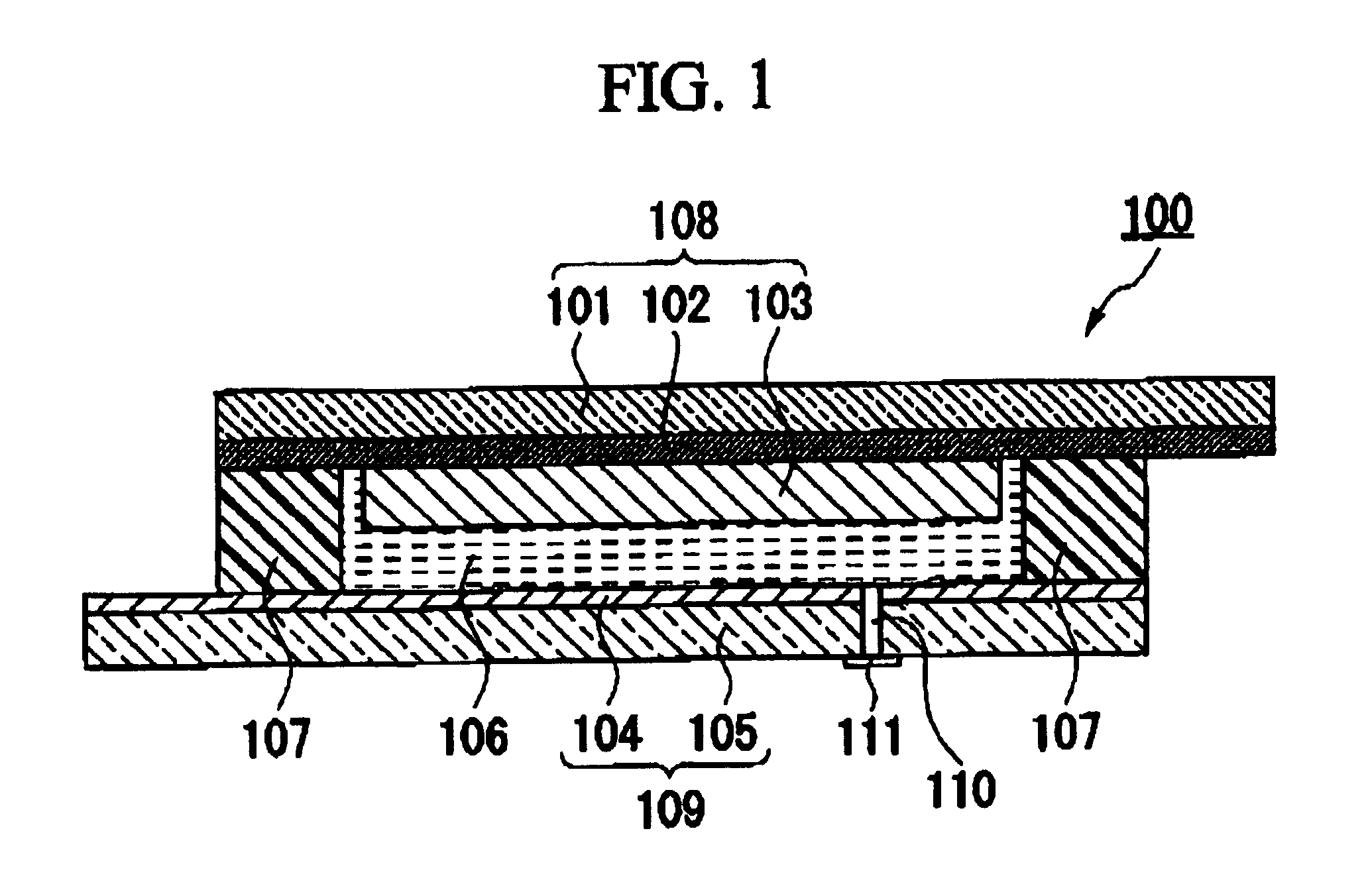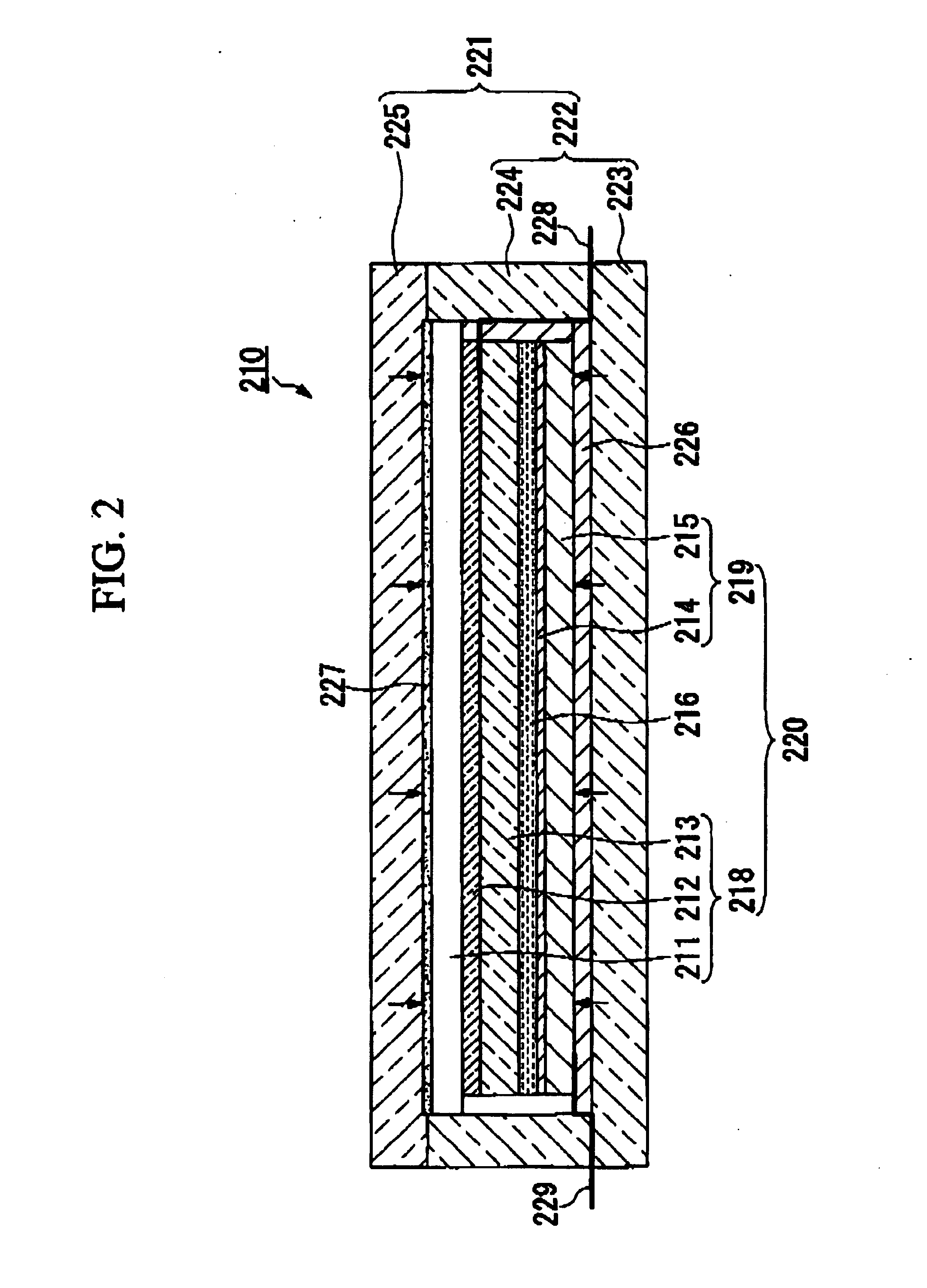Photoelectric converter and method for manufacturing same
- Summary
- Abstract
- Description
- Claims
- Application Information
AI Technical Summary
Benefits of technology
Problems solved by technology
Method used
Image
Examples
first embodiment
[0073] A first embodiment of the present invention will be described in detail based on examples.
[0074]FIG. 2 is a schematic cross-sectional view illustrating an example of a photoelectric conversion element according to a first embodiment of the present invention.
[0075] A dye-sensitized solar cell (photoelectric conversion element) 210 includes a working electrode (also referred to as a window electrode) 218 having a porous oxide semiconductor layer (also referred to as an oxide electrode) 213 having a sensitizing dye supported on the surface thereof, a counter electrode 219 provided on the porous oxide semiconductor layer 213 side of the working electrode 218 facing to the porous oxide semiconductor layer 213, and an electrolyte layer 216 at least a part of which is between the two electrodes. The working electrode 218 includes, for example, a first substrate 211 and a transparent conductive film 212 and an oxide electrode 213 provided thereabove in this order. The opposing coun...
second embodiment
[0101] In the above, a photoelectric conversion element 250 according to the first embodiment of the present invention as shown in FIG. 4 has been described. Improvements are made for this photoelectric conversion element 250 mainly from the following two viewpoints.
[0102] Firstly, the influence on dye supported on a dye-sensitized semiconductor electrode caused by the heat applied when electrodes are bonded together is reduced, excellent weather resistance when used for a long time is provided, and the injection of an electrolyte solution is facilitated.
[0103] In other words, according to the structure shown in FIG. 4, since the heat is not directly applied to two electrodes, i.e., a working electrode 258 and a counter electrode 259, it is possible to eliminate the influence of the heat on the above-described dye. Furthermore, it is possible to form a stacked body 260 formed by sandwiching the electrolyte solution between the working electrode 258 and the counter electrode 259 by...
third embodiment
[0139] A third embodiment of the present invention will be described in detail based on examples.
[0140]FIG. 6 is a plan view illustrating a dye-sensitized solar cell as an example of a photoelectric conversion element according to a third embodiment of the present invention, and FIG. 7 is a cross-sectional view taken along Line A-A in FIG. 6.
[0141] A dye-sensitized solar cell 401 is formed by arranging and sealing a plurality of stacked bodies 402 on a single plane within a casing 403.
[0142] The stacked body 402 is formed by stacking a working electrode 421 having a porous oxide semiconductor layer 421a provided on one surface thereof, a counter electrode 422 provided opposing the porous oxide semiconductor layer 421a, and an electrolyte layer (not shown) between the working electrode 421 and the counter electrode 422 together.
[0143] The working electrode 421 includes a transparent substrate 421b that is a glass substrate, a light-transmitting plastic film, or the like, a transp...
PUM
 Login to View More
Login to View More Abstract
Description
Claims
Application Information
 Login to View More
Login to View More - R&D
- Intellectual Property
- Life Sciences
- Materials
- Tech Scout
- Unparalleled Data Quality
- Higher Quality Content
- 60% Fewer Hallucinations
Browse by: Latest US Patents, China's latest patents, Technical Efficacy Thesaurus, Application Domain, Technology Topic, Popular Technical Reports.
© 2025 PatSnap. All rights reserved.Legal|Privacy policy|Modern Slavery Act Transparency Statement|Sitemap|About US| Contact US: help@patsnap.com



